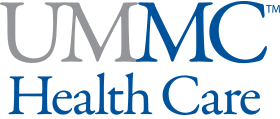- Health Care
- ENT
- Patient Handouts
- Adult
Adult
Main Content
Tracheostomy Homecare
Supplies Needed:
- Humidifier
- Saline Solution
- Syringes
- Suction Catheters
- Gauze
- Hydrogen Peroxide
- Tracheostomy Ties
- Extra Tracheostomy Tube
- Suction Machine and Tubing
- Tracheostomy Brushes/Pipe Cleaners
- Plastic Basin
- Sterile Container for Saline Solution
- You must wash your hands before and after all care. Clean supplies must be used.
- Extra humidity is required because the nose and mouth, which filter, warm, and moisten the air you breathe, are bypassed. Drinking plenty of fluids also helps keep your airway moist. Increased humidity will be needed during the winter months when your home becomes dry. More moisture is needed whenever secretions become thick, dry, or form plugs. Pink or blood tinged secretions may also indicate a lack of moisture. Putting saline solution into the trachea adds moisture and causes a cough to clear secretions from
your airway. - Symptoms to report to your doctor or the local emergency room are:
- Tracheostomy tube comes out and you are unable to replace it
- Difficulty breathing
- Thick, foul smelling secretions
- Chest discomfort
- Dry, crusted secretions (mucous plugs) or blood-tinged secretions from the tracheostomy tube
Cleaning the Inner Cannula:
- To unlock and remove the inner cannula, turn it until the notch area is reached and slide it out.
- Place the inner cannula in the Sterile Container with Hydrogen Peroxide and allow to soak for 1-2 minutes.
- Use a small brush or pipe cleaner to clean the inner cannula and rinse in the saline solution.
- Look through the inner cannula to make sure it is clean. If it is not, repeat steps 2 and 3. Once clean, shake the inner cannula to remove excess moisture.
- Reinsert the inner cannula and lock in place.
- This needs to be done every 4 hours.
Skin Care:
Skin around the tube should be kept clean and dry.
- Q-tips or a damp washcloth may be used to gently clean around the neck opening.
- Gauze may be placed under the ties next to the skin. Hold the tube while changing the gauze.
- Change the gauze if it becomes wet, dirty, or frayed.
- Look for redness or skin breakdown.
Tracheostomy Ties:
Velcro tracheostomy ties can be washed and reused. Change the tie when wet, dirty, or frayed.
Suction:
The purpose of suction is to remove secretions that you cannot cough out. Suction will clean your airway and help you breathe better.
- Connect suction catheter to tubing from suction machine.
- Moisten the catheter tip with saline solution.
- Take 4 to 5 deep breaths.
- Gently insert the suction catheter through the tracheostomy tube. Do not cover the suction control vent while you insert the catheter. Pass the catheter as far as you can without force, and then withdraw slightly before starting suction.
- To apply suction, cover the vent with your thumb. Do not apply suction for more than 10 seconds. Release thumb from vent if you feel the catheter grab during suction. Gently rotate the catheter as it is withdrawn.
- Suction saline solution to clean the catheter.
- Do not insert the catheter more than 3 times during a suction period. If more suction is needed, allow yourself a 5 to 10 minute rest.
- Breathe deeply after the catheter is removed.
Instilling Saline Solution:
The purpose of instilling saline solution into your airway is to stimulate a cough and clear secretions.
- Pour a small amount of saline solution into a clean cup or use the single dose vial of sterile saline.
- Draw up 2 to 3 cc into the syringe.
- While taking a deep breath, instill saline solution through the tracheostomy tube.
- Cough while covering your tube with a gauze sponge or soft paper towel.
- Repeat until your airway is clear. If unable to clear your airway with saline solution, use suction.
- When secretions become thick and dry, saline solution may need to be instilled as often as every hour.
Precautions:
- When bathing or taking a shower, keep water out of tube. Do not swim.
- Avoid powders, aerosol sprays, dust, smoke, and lint from facial tissues.
- Do not use over-the-counter antihistamines (cold medications), which dry secretions and the airway.
For Questions or Emergency Care:
Call the office at 601-984-5160. You may need to speak with the doctor on-call.


